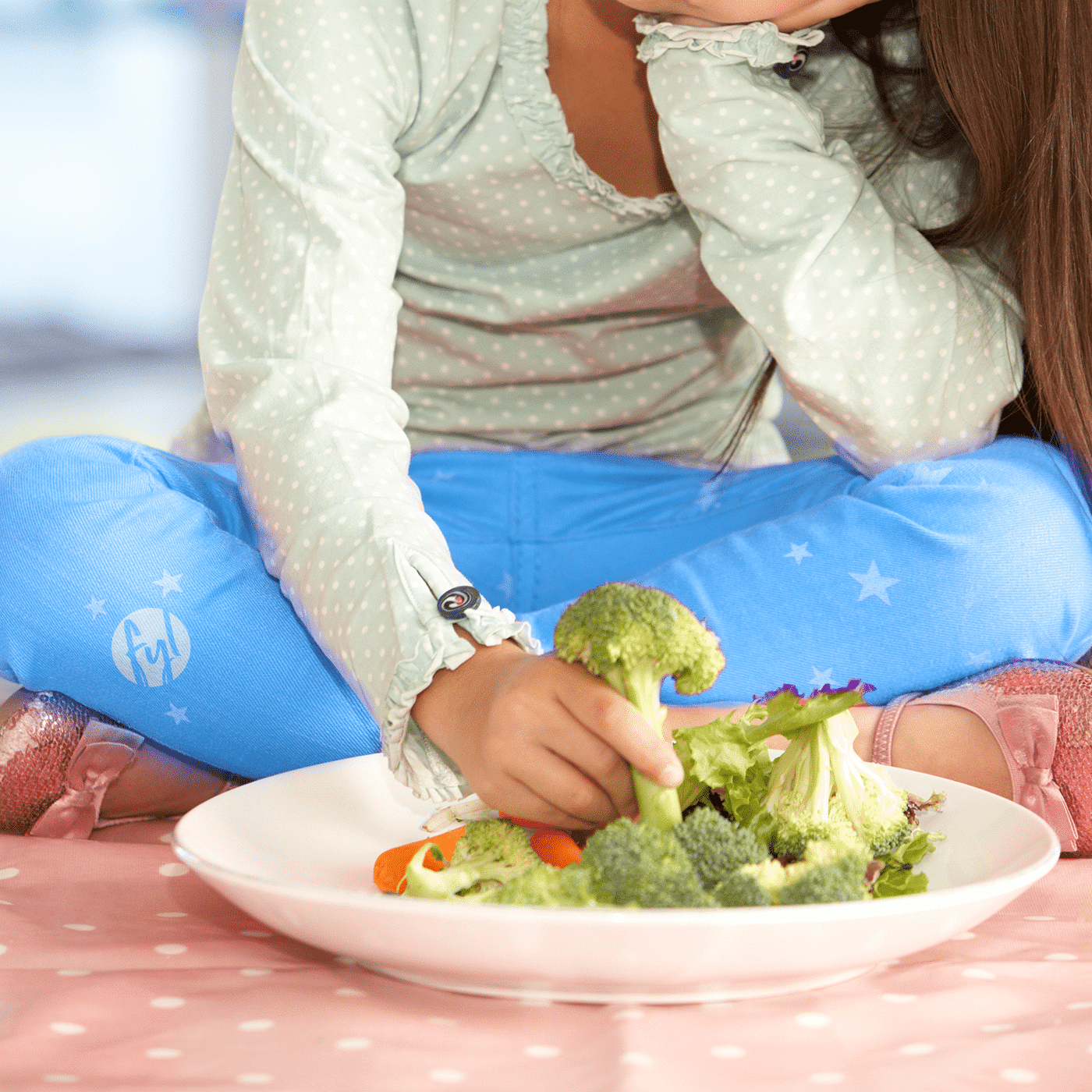Mealtimes with fussy eaters can be a bit of a rollercoaster ride! You prepare a dish that you know they liked yesterday, only for them to decide they don’t like it today. Suddenly, a simple meal has turned into a standoff with your toddler (or child). So, what can you do to manage the situation effectively?
This may not completely console you to know, but it is normal for children to be fussy eaters. It is normal for them to not like the taste, texture, shape or even colour of particular foods. It is also normal for them to like something one day and not the next (even though it can be frustrating to no end!).
Fussy eating is a part of a child’s development and is a way of exploring their environment and asserting their independence.
Keeping your cool can be a challenge, but it is oh so very important. In fact, some fussy children aren’t fussy because they don’t like the food, they are fussy because they want to see the ‘unusual’ reaction they get from you when they are fussy! Keep that in mind.
So, let’s talk about what you CAN do to help yourself and your little one during this learning experience.
Mealtimes with Fussy Eaters
Your child’s willingness to try food depends partly on the eating environment. Pleasant, low-stress mealtimes can help. Try to make mealtimes a happy, regular and social occasion. Children thrive on routine and mealtimes are no different.
Tips for making mealtimes enjoyable:
- Eat at regular times.
- Sit with your child whilst they eat.
- Turn the TV off so your family members can talk to each other instead.
- Set a time limit of about 20 minutes for meals. Anything that goes on for too long is not going to be fun. Take any food that has not been eaten in that timeframe away and don’t offer them any more food until the next planned meal or snack time.
Introducing New Foods
Introducing new foods to fussy eaters can be challenging. The trick here though is patience and persistence. Your child might have to see a particular food on their plate 10-15 times before they even try a taste! Just keep offering them new foods at different times – your child will probably try them and eventually like them.
Practical strategies for introducing new foods are:
- Never force your child to try a food.
- Start small and provide lots of praise. Start by asking your child to lick a piece of food and work up to trying a mouthful.
- Make food attractive. Give them a variety of different colours, shapes and sizes and let your child choose what they eat from the plate.
- Put a small amount of new food on the plate with familiar food your child already likes. Encourage them to touch, smell or lick the new food.
- Lead by example. Serve them a small portion of what you are eating.
Fussy Eaters and Independence
Fussy eating can also be related to them asserting their need for independence. It can be important to support your child’s need for independence when it comes to food. Do this by providing healthy options but allow them to choose how much they’ll eat.
Tips for supporting your child’s food independence:
- Try letting them choose within a range of foods. Limit options to 2-3 things to avoid them becoming overwhelmed. For example, instead of asking what they would like to eat from the fridge, you could ask, “would you like apple slices or carrot sticks?”.
- Get them involved in preparing meals. For example your child could help out with:
- Picking a recipe
- Washing fruit and vegetables
- Getting food out of the fridge
- Tossing a salad
If you have a fussy little one, give the strategies a go! Although some degree of fussy eating is normal, if you feel that your child’s fussy eating is negatively impacting their health or they tolerate very few foods, it might be time to speak to a Fuel Your Life dietitian.







